Flying over the island of Borneo ( or Kalimantan as it is known to Indonesians), one feature of the landscape immediately catches the eye. The hills are a checkerboard of tall and short vegetation, of clumps of old forest on ridge-tops and tangles of newer growth in long valleys, of brilliant green plots of hill rice interspersed with former fields where forest species are just getting a foothold. Arriving in early September just before the rains of the northeast monsoon, the visitor is treated to an even more striking site: columns of smoke rising from thousands of fields burning throughout the island.
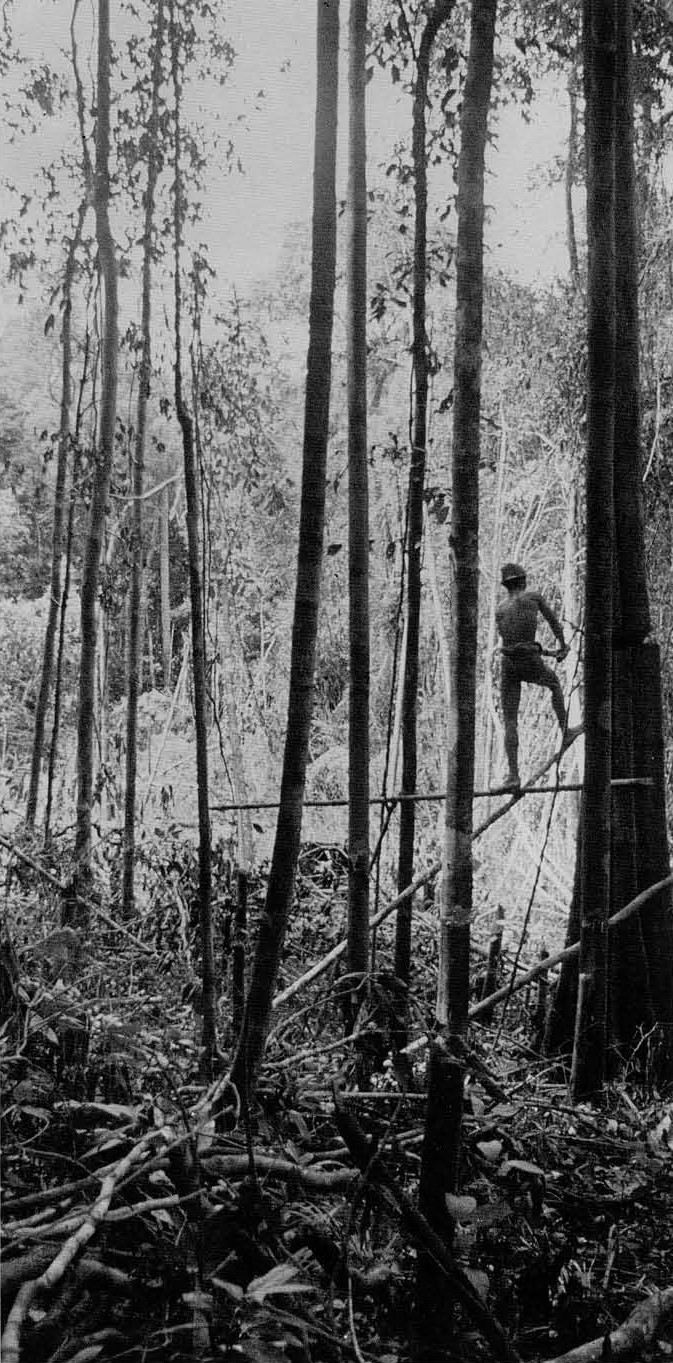
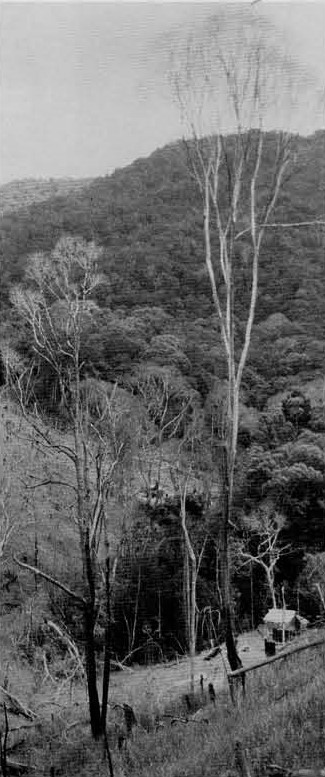
The patchy vegetation, the smoke, the newly charred fields are markers of a pattern of land use that is very prevalent on the forested island. Known as shifting cultivation, swidening, slash-and-burn and to many Bornean natives as ladang farming, this type of agriculture is a cyclic one used for centuries not only in Bornean forests but throughout the humid tropics of the world. It is, however, a type of agriculture that may, and indeed does, appear strange or “primitive” to some people who are more familiar with the neat grain-fields of the temperate zone.
Shifting cultivation was quite roundly condemned by European and North American trained agronomist and foresters for many years. In recent decades, however, the views of many experts have changed dramatically. Rather than be criticized as a wasteful, primitive, and unproductive system, shifting cultivation is now hailed by many as a good way of making a living under the conditions that many tropical areas offer (Fig. 1)
Although some foresters continue to decry the loss of commercial grade timber to the practice, most experts agree that in its traditional form, practiced where people are few and lands are forested, shifting cultivation can be an efficient and conserving use of resources. This shift in opinion is largely a result of careful investigations conducted in Borneo and elsewhere by anthropologists, geographers, and others. Their studies show that widespread and long-term environmental deterioration need not be a result of shifting cultivation, that most swiddeners do not work very long hours and yet harvest quite a reasonable yield, and above all, that other agricultural systems that have been suggested of put into operation in the humid tropics have fared far worse.
Although traditional upland shifting cultivation may be appropriate way of farming in those areas of Borneo where human densities are still very low, populations in many parts of the island are rising and use of the forests is intensifying. In some areas, the relatively large acreages needed to sustain the system are no longer available, and the need to preserve dwindling reserves of the rain forests is increasingly pressing. More land intensive agricultural practices will have to replace shifting cultivation if forests are to be preserved and people are to make an adequate living. Unfortunately, the search for productive, sustainable agriculture is not an easy one; systems that are highly successful in temperate zones have been notorious failures in the hot, wet conditions of the tropics. Systems that have proved excellent in one cultural setting often are rejected in another. And many new technologies that have been proposed demand the importation of expensive and scarce chemicals, seeds and tool that few swiddeners can afford. From where will successful models of intensive farming for Borneo come?
The search need not lead far from Borneo itself. The commonly described pattern of shifting cultivation, a system of short-term cropping and long term fallowing of land, is often erroneously assumed to be the only type of agriculture known to native groups of the island. In reality the are many other forms of cultivation—and permanent field—practiced in Borneo. Some of these may indeed offer well adapted models of resource use for many parts of the island where populations are growing more dense and forests less abundant and more precious. After first reviewing the main characteristics of shifting cultivation practiced in Borneo, I will outline some of these alternative and heretofore overlooked ways of making a living in the rain forests of the island.
Swiddening in the Hills of Sarawak
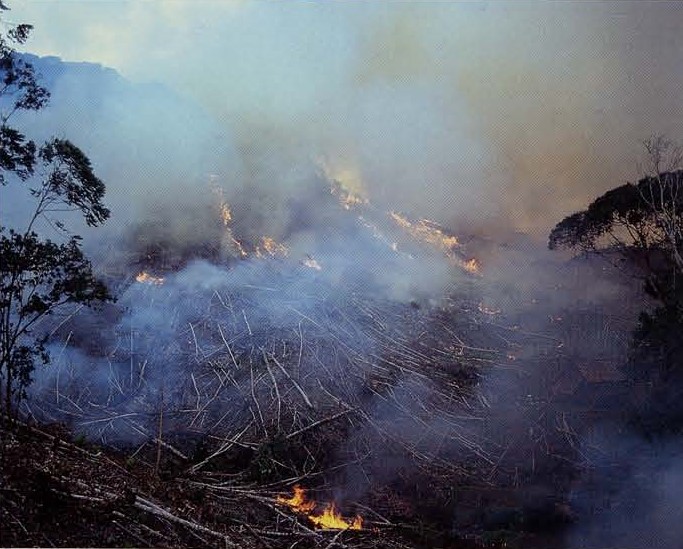
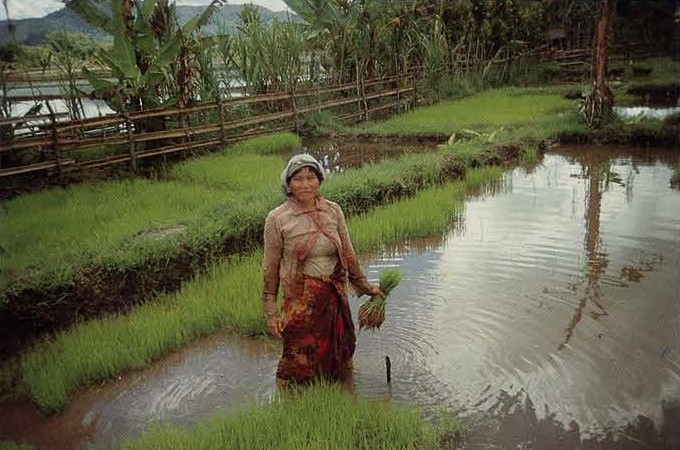
Shifting cultivation has innumerable variants, as one might expect of such a widespread way of using forest and soil resources. Neither the crops planted nor the tools used, nor the cycles followed nor the yields realized remain constant from region to region. In Borneo alone many differing and changing forms are practiced.
The Iban are one group of shifting cultivators whose agriculture has been described by several researchers, including the anthropologists Freeman 1955, 1970), Sultive (1978), and myself (1982). Each one of these investigators describe farming patterns that differ somewhat from those found by others, largely because each studied different Iban communities. However, the practices of the Iban who farm the steep hills of the Batang Lupar drainage (Fig. 7) in Sarawak’s Second Division are, in broad outline, representative of much of much of the shifting cultivation that is carried out in Borneo (Padoch 1982). That ancient homeland of the Iban, farmed for centuries, is also a region where poor yields and pockets of environmental deterioration are signaling a need to study and pursue alternatives.
Along the highland rivers and streams of the Second Division there has long been a dearth of old forest cut. Therefore the Iban who farmed those slopes in the mid-1970’s commomly made their fields in areas of younger, secondary forest. Use of secondary growth is not undesirable. Even when older growth is available, most Iban swiddeners prefer to make their new farms on land that has previously been cleared but now bears trees of considerable size. In a few areas primary forest is still felled for framing, but such pioneering practices are becoming very rare.
Cutting even secondary is a tricky task. First underbrush and smaller trees are slashed by teams of workers that include both men and women. Then the large trees are cut (Fig.2). Particularly if old forest is being felled, this is a job that requires great strength, skill, and courage. Men cut the forest giants, although some Iban women can also wield a heavy axe and bring down formidable trees.
Clearing a plot is followed by a period of waiting for the slash to dry. The rainy climate of Borneo makes a time of anxiety for shifting cultivators. Each day the cut vegetation lies under the equatorial sun it becomes drier and quicker to burn. But each day as the monsoon approaches, there is also a risk of a soaking rain. A good even complete burn is important for the success of the swidden. Burning clears the land, deposits a nutrient-rich layer of ash over the soil, and destroys any weeds and pests that may have invaded the area (Fig. 3). A poor burn augurs badly for the whole season’s farming effort.
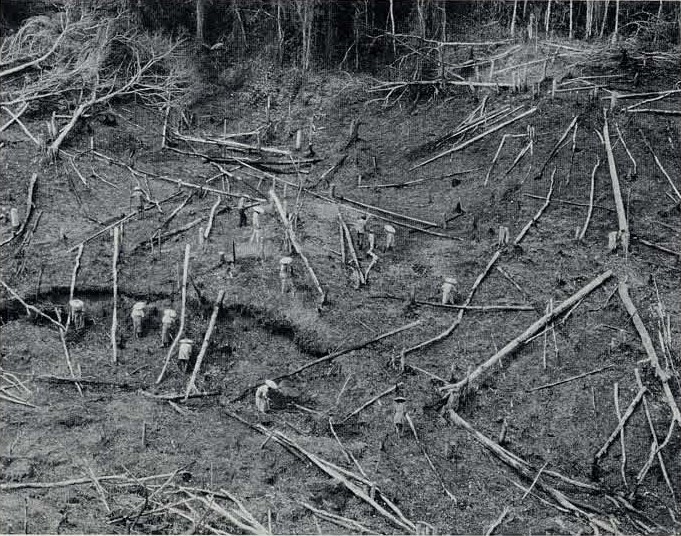

Once the fields have been fired as completely as possible—sometimes some secondary burning is necessary—planting begins (Fig. 5). No land preparation disturbs the surface of the soil. Only small holes are punched with a dibble stick and seeds are dropped in. In every new Iban swidden the most important crop is rice, often six or more varieties; however, typically a broad assemblage of minor crops is planted as well. Some are mixed in randomly, others may be clustered in particularly favorable or convenient areas of the farm.
One weeding is usually all it takes to protect the planted crops from invading invading vegetation, but constant vigilance, day and night, is frequently required to save them from marauding animals. Thus, particularly in areas where extensive forests border rice fields, Iban swiddeners spend many weeks living in temporary houses in the midst of their fields (Fig. 6).
The traditional rice varieties favored by most Iban farmers tend to ripen slowly; only after six of seven months are they ready to be reaped. When the fields are finally harvested on the upper Batang Lupar, yields of about 800 to 900 pounds of rice per acre are considered good. This may not appear high, but neither is the labor input of about 60 days per acre that is required to produce the rice. Swiddeners in the region strive to satisfy the needs of their own households for rice, but quite frequently that goal is not acheived and wage work must be found to make up the year’s needs. Market production of rice is virtually unknown. Other areas of Sarawak, more recently settled and supporting fewer people and more forests, tend to be more productive.
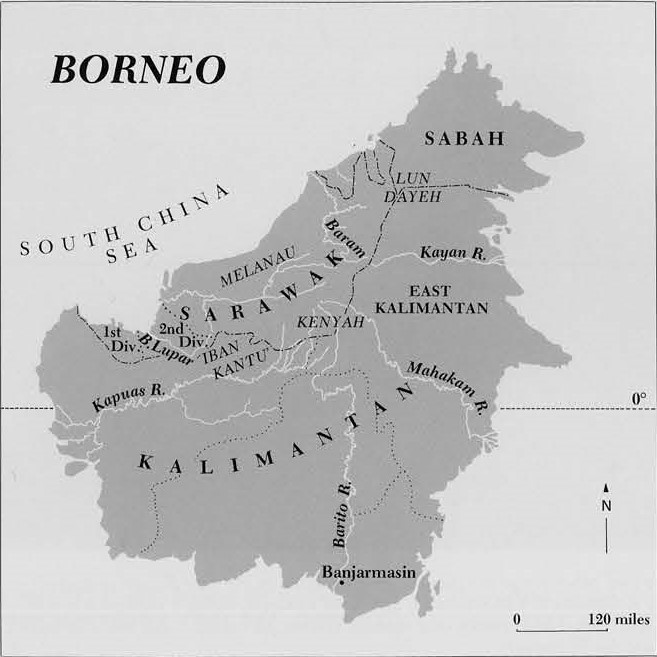
After the rice has been brought in, Iban and others swiddeners typially return to the overgrown fields to collect vegetable crops and other useful plant that were left behind. The following year’s rice production usually comes from other fields, cut the next year from secondary forest. If the supply of the land permits, the harvested swidden is the given at least a decade’s rest from the rice production and the beginning of a new cycle. Within that decade the soil’s fertility will recover considerably, if not completely, and noxious weeds will be eliminated by the shade of growing trees.
Swiddeners such as the Iban shift their rice fields every year of two, not because they have used faulty agricultural practices and have ruined the land, but rather because if they don’t shift, the equality of that land will decline rapidly. Their annual changing of fields in not a sign of failure, it is an absolutely essential part of the system.
In some parts of the upper Batang Lupar watershed, as in other areas of Borneo, the land needed to maintain ten year fallows is not available and environmental degradation is the result. Populations and economic expectations are growing, and migration into yet uncut forests is no longer possible. Ecologically, economically, and socially acceptable alternatives to swiddening need to be identified. Several Bornean production systems may offer solutions.
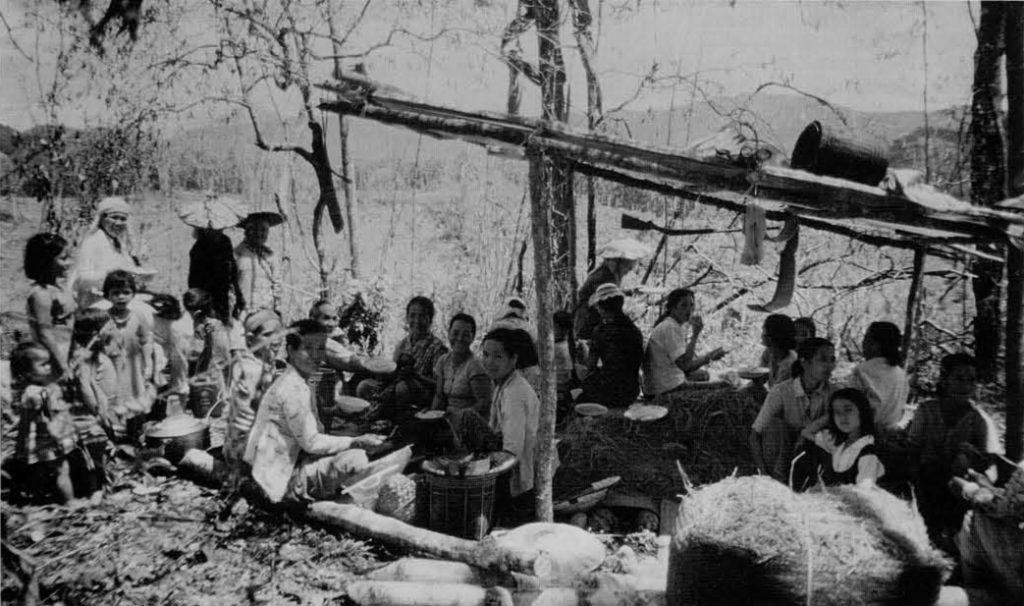
Using “Abandoned” Swidden-Fallows
The search for more intensive forms of land us to replace shifting cultivation should start with reexamination of swidden farming as it now exists in Borneo, with a particularly hard look given to the fallow stage. We have long assumed that after cropping a field to the spontaneous invasion of the forest species. Indeed, that’s how we defined swiddening.
“Natural” fallow, we know, has important ecological functions, some of which were mentioned above; however, it has long been assumed that these benefits were brought at the sacrifice of the economic use of old swidden fields. But recent research is proving some old assumptions wrong and is asking new questons: Are all swiddens really abandoned and economically unproductive after a year of two? Can they be made more productive? Evidence gathered in many tropical regions, including Borneo, suggests that some of those fields that we have called “abandoned” may not be abandoned at all and that intensifying the use of swidden fallows may be promising direction for shifting cultivators.
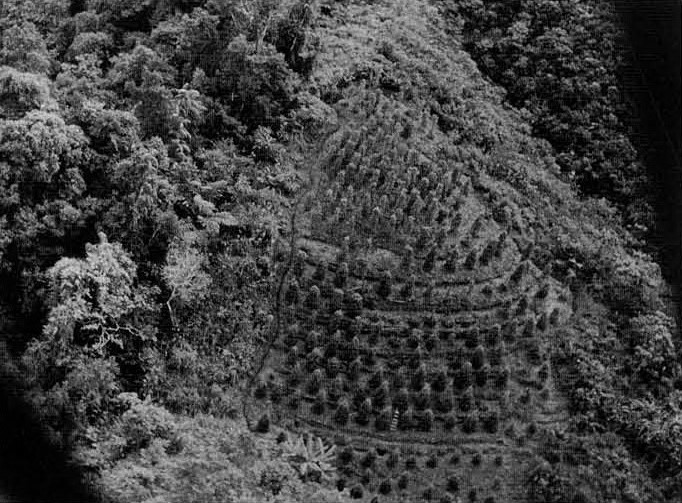
Sarawak’s Iban, like other Borneans and shifting cultivators throughout the tropics, regularly go to their old swiddens to find for their soup pots, fruit for a snack, wood for their cookstoves, and materials for constructing their houses. Some of these economically important products are remnants of the crops that were planted, some are spontaneous invaders that came in after active cropping ceased, and still others may be plants that were cleared and that escaped the burn. Many of those not deliberately planted have probably been helped along by some occasional management: a little weeding is often done around a medicinal plant, or a potentially harmful liana may be cleared for a useful timber tree.
Many economic uses of swidden fallows and such “minimal” management techniques are very difficult to detect, describe, and measure, and have largely been ignored by scientists. But while some swidden fallows may be very casually managed and may yield products that contribute only slightly to a household’s subsistence, the fallows of the swiddeners are transformed into orchards of high commercial values.
The rubber gardens maintained by Iban and other tribal shifting cultivators in Borneo have been planting rubber trees since the earliest years of this century and their production has long significantly contributed to Indonesia’s exports (Pelzer 1978:282).
Swiddeners’ rubber gardens have rarely been seriously studies. They tend to have far messier appearance than those planted by commercial concerns. But the “weed” trees, shrubs, and herbs growing in these gardens are often useful plants. Moreover, tolerance of weeds and other vegetation by the shifting cultivator may indeed be an economically far wiser strategy than the sophisticated planter’s clean weeding (Pelzer 1978:283).
The cultivation of tree crops other than the rubber may also allow a fallow to continue to yield an economic return while still performing the fertility – enhancing functions of a “natural” fallow. Some Iban farmers have planted significant quantities of citrus and other marketable fruits in old fields. Researcher Tim Jessup reports that the Kenyah of the far interior Apo Kayan maintain very diverse orchards in limited areas of swidden fallows (pers.com.1987). Still other swiddeners transform their fallows into pepper plantations (Fig. 9). Is further commercial use of swidden fallows possible of desirable? the answer undoubtedly lies in the specifics of each situation.
Similar instances of intensification of swidden system in the Amazon basin have been hailed as examples of how traditional “agroforestry” displays great environmental wisdom and considerable commercial potential (Deveven and Padoch 1988, Padoch et al. 1985, Posey 1984 and others). Many such systems in Borneo are still awaiting study. Meanwhile increased use of “abandoned” fallows is a promising direction for developing shifting cultivation and supporting more people on the land already cleared.
Swiddening in the Swamps
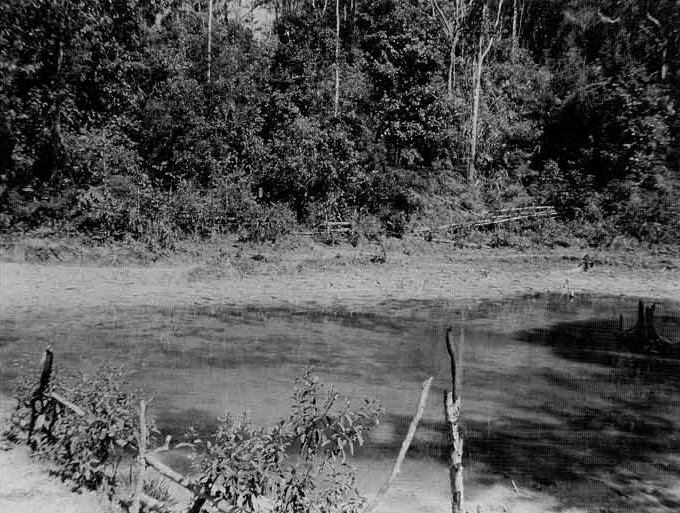
Apart from the possibilities that dryland swiddens offer, there are other little-known Bornean systems that can and have supported food crop production without long fallow cycles. The Iban of Sarawak and their cultural cousins on Knantu’ of neighboring areas of Kalimantan, as well as other interior tribal farmers, often plant patches of rice in naturally swampy areas (Padoch 1982, Dove 1985). These small damp plots should not be confused with the leveled, terraced and irragated “paddy-fields” of “pond-fields” that are usually associated with rice farming in Asia. In this upland Bornean version, called padi paya by the Iban, attempts at leveling the land, controlling water levels, and even spacing rice plants are minimal at best. The most notable padi paya farming is the opportunistic and efficient way farmers make use of a microenvironment that offers particular advantages.
Cultivation of a paya area begins, as it does in dry areas, with the cutting, drying, and burning of vegetation (Fig. 10). Since paya plots tend to fallowed for a very brief time, the growth to be cut is usually a thick tangle of high grasses, herbs, creepers, and only the smallest trees. After the slash is considered dry enough it is fired, although lying on poorly drained soil it rarely burns well.
Following the burn, some land preparation is done; however, there is no intensive plowing. puddling, or harrowing here. The Iban farmer usually just chops up unburnt tufts of grass and tramples them with their feet to create a relatively even surface An unburnt stump or an unleveled hillock is not considered a problem and tends to be left in the field. Rice is then either broadcast into the field or, more characteristically among the Sarawak’s Iban, is planted in a seedbed and then transplanted as seedlings. One weeding is usually enough until harvest.
Upland padi paya farming departs from dryland shifting cultivation only in the operations of land preparation—however cursory they may appear at times—and in transplanting of rice seedlings. These operations tend to make swamp rice farming a little more demanding of labor— perhaps 50 percent more hours need to be spent per acre—than is dryland swiddening; however, the labor put in doesn’t approach the very high labor inputs required in irrigated Javanese-style farming and the rewards it offers are considrable. A padi paya farmer often harvests twice as much as his dryland farming counterpart, and occasionally even three times as much (almost a ton of rice per acre).
Even more important for the future of Borneo, swamp swiddens require far less fallowing time to restore them to a condition suitable for rice production than do dryland swiddens. Iban’s and Kantu’ paya farmers usually return to the same plot after only a few years of fallow, and sometimes after only one.
Although some experts insist that shifting cultivators are reluctant to take up the muddy task of swampland cultivation, this style of farming will undoubtedly become more important as populations rise. For a moderate labor input it delivers a substantial amount of rice, and it requires much less land per capita than does long-fallow swidden cultivation. The problem is of course finding suitable natural swampy areas. Even now most swampland cultivators farm only in small plots. To turn other areas into padi paya fields might require more labor in irrigating and leveling land, but for this task a Bornean model is also available.
Pond-Field Farming in the Kerayan
Far to the northeast of the Iban swamp swiddens, on a plateau in the Indonesian province of East Kalimantan, another Bornean tribal group, the Lun Dayeh, grow their rice in a much more intensive manner. Their homeland, the Kerayan kecematan (subdistrict), lies just where the borders of East Kalimantan, Sarawak, and Sabah meet. While difficult access is the rule in much on interior Borneo, the Kerayan is unusual in that it is totally in accessible by river, the usual form of transportation on the island. Because the area;s remoteness virtually eliminates the possibility of marketing agricultural products, farming in Kerayan is limited almost exclusively to subsistence production. Rice is by far the most important crop, and shifting cultivation is known and practiced. But it is a form of irrigated rice production (lati’ ba in Lun Dayeh) that distinguishes this group from most of Borneo’s interior farmers. The Lun Dayeh carry on a system of farming permanent leveled and dyked pond-fields (Fig.11) that regularly produces great surpluses of rice.
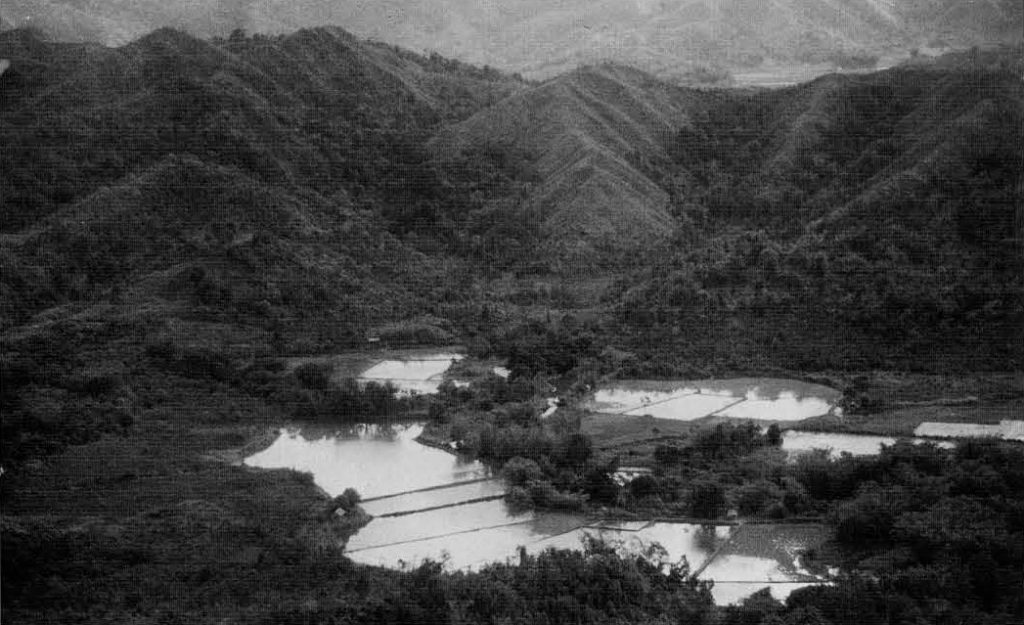
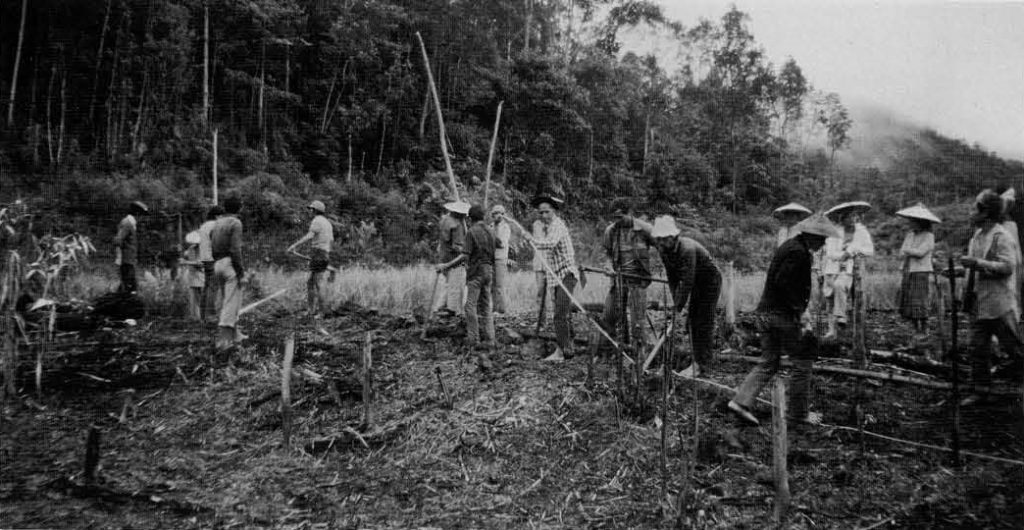
The reason for the abundant harvests of the Kerayan has long been misattributed to exceptional soil fertility. Research has proved this to be untrue. Much of the Kerayan is covered with some of the poorest soils found on the island. Large expanses of white, sandy soils unfit for any type of agricultural undertaking characterize the area. It is because of the Lun Dayeh farmers’ acuity in judging the quality of the soils and warers and the suitability of landforms in their area, as well as their proven system of rice production, that their lands produce great harvest (Padoch 1986).
While nature has not blessed the Kerayan with exceptionally good soils, the region has an advantage over most of interior Borneo. Although it is hilly, almost mountainous region, valleys and waters as Iban paya swiddeners do, the Lun Dayeh have improved on nature by controlling water levels with canals, dykes, and watergates (Fig 12). These irrigation works do not rival the wonders of Java, Bali, and northern Luzon, but they do allow farmers to make sure their rice crops get the proper amount of water at the proper time.
Pond-field farming takes swamp rice cultivation several steps further, although the Lun Dayeh, like paya farmers, spend little time preparing the land. The vegetation that needs to be slashed is mostly just the previous year’s rice straw mixed with a few herbaceous weeds (Fig. 13). These are cut and trampled into the soil or pulled out and piled on dykes. Much of the clearing is not by the Lun Dayeh at all but rather by their water buffalo which are allowed to roam the fields before planting time (Fig. 14). These beasts will eat some rice straw, trample some into the soil, break up any hard clods, and fertilize the fields by defecating into them. Occasionally water buffalo will make the farmer pay dearly for their services. They can totally destroy dykes and waterworks, making extensive repairs necessary. While repairs of earthworks are underway, seed beds for young rice plants are about a foot in height, they are transplanted into the fields (see Fig. 4).
The Kerayan is an area blessed with abundant water which the Lun Dayeh know how to control. By keeping the water levels in their rice feilds high throughout the growing season, Lun Dayeh farmers virtually eliminate weeding. Good water control also means that harvests rarely fail, and the Lun Dayeh rarely reap less than a ton of rice per acre (Fig. 15). These yields are more than enough to meet their household needs.
The Lun Dayeh system certainly functions well in the remote valleys of the Kerayan region. How easily this system might be transferred to other parts of the island needs to be investigated. Some of that testing is already being done on a small scale. Lun Dayeh schoolteachers, transferred by the government outside their homeland, have brought their traditional methods to the steeper terrain of areas like Apo Kayan highlands (T. Jessup, pers. com. 1987). Preliminary reports indicative that the Kenyah of that area have had good, if yet limited results.
Sago Orchards of the Melanau
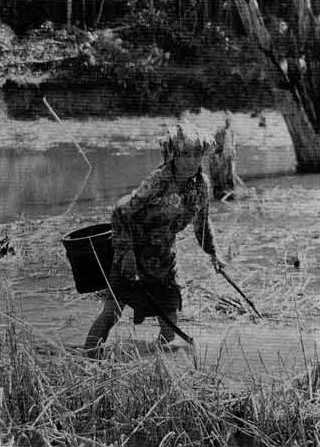
All the resource use methods we have looked into up to now have involved the production of rice, a staple throughout the island. There are, however, still other production methods that do not include rice at all. The Melenau people of the Oya Mukah, and other rivers along the coast of Sarawak have traditionally cultivated the sago palm for sustenance and commerce (Morris 1953). They not only have produced substantial quantities of the palm starch, but have done this on acidic peat swaps soils believed by many to be completely unsuitable for agriculture.
Melanau sago orchards are established much like every other agriculture enterprise in Borneo: trees are felled and burned to clear fields. But rather than dibbling idn rice, the Melanau plant suckers of the sago palm (Metroxylon sagu) into the swampy fields. If the young suckers survive the attacks of monkeys, pigs, ants, and honey-bears, the tending of sago gardens requires little regular work. Only one weeding per year for the first 2 or 3 years will suffice; in the remaining 15 years or so that the sago palms are allowed to grow, cleaning is even less frequent.
During the early years vegetables are often planted between the palms. A visit to the farm to pick the days’ greens is also often an opportunity to clean around the growing sago stalks. Maturation tomes for the sago palms vary, often between 10 and 15 years, depending on soil and other variable conditions. Harvesting is done by cutting the trees into logs, rasping the sago, and washing out the starch. Traditional processing is a tedious task, but now machines help with they work.
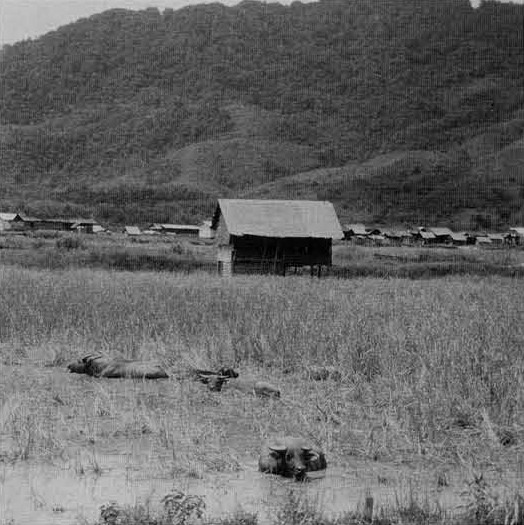
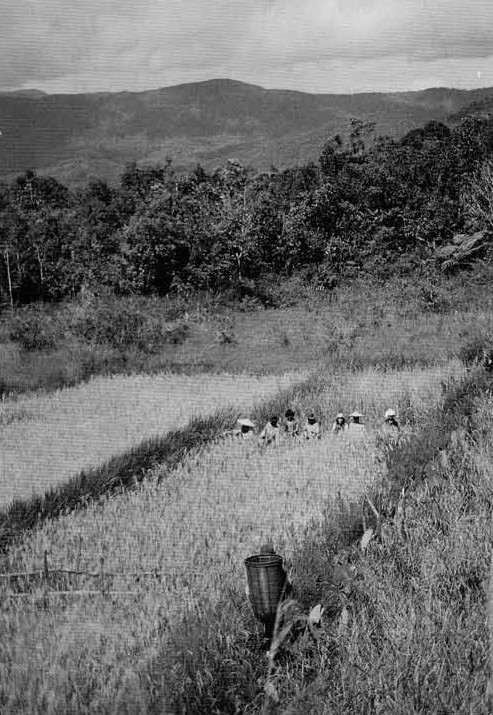
The practice of interplanting perennial and annual crops, as Melanau sago growers do is an “agroforestry” technique that is considered to be among the most modern and promising agricultural methods for the humid tropics. While waiting for the sago palms to mature, the Melanau produce a fast growing crop in the trees’ partial shade. The soil is protected from the tropical sun and rain as the palms grow, and local farmers even suggest that the extra vegetation may help shield young suckers from attacks by pests. The Melanau have reportedly produced quantities of sago starch for centuries from the same lands, with no environmental deterioration. Using traditional Melanau methods as a model, possibly substituting other crops for sago, may offer another promising alternative for shifting cultivators running out of arable land.
Duck Egg Production in South Kalimantan
The final and certainly the most unusual production system that we will review is found in swamps at the other end of Borneo. The Alabio district is located near the city of Banjarmasin in South Kalimantan, in an area of relatively high population density. Since the area has long had little free land for rice cultivation, the commercial production of duck eggs has supplemented rural incomes since at least the beginning of this century (Vondal 1987).
Patricia Vondal has studied the Banjarese villagers who produce eggs of a local breed of duck (Anas platyrhynchos borneo) for export to urban markets, and reports that producers san earn as much as 20 times the $200 per capita annual income of farmers with similar amounts of land in Java or Bali (1987:28). They swampy area where this highly successful production takes place would be considered certainly in hospitable if not uninhabitable by many.
Historically, Banjarese duck egg producers allowed their flocks of ducks out during the day to scavenge for food in the swamps and rivers surrounding the village, but caged them at night to lay their eggs. In the dry season the ducks would remain caged to prevent them from damaging local rice fields. However, when human population densities increased and rice cultivation expanded, the traditional herding system led to considerable conflict. The herders responded with ingenuity and innovation to problems of resource scarcity and change. When free-ranging ducks became pests, the herders learned to produce eggs by caging their ducks throughout the year and providing them with regular feed. When the traditional duck feeds, sago and fresh fish, become scarce, villagers substituted widely available dried fish, snails, rice bran, and various types of swamp vegetation.
It is interesting to note that successful intensification of duck production in Alabio swamps did not occur in the manner recommended by government experts, i.e., substituting a commercially prepared duck feed imported from East Java. Instead, producers used a range of locally available products to increase duck egg production, and maintain that production through all seasons. The particular innovations introduced by Alabio duck producers are peculiar to that system; however, the readiness to change and the experimentation with local products that Vondal documents are qualities that are found throughout Borneo’s rural populations.
Conclusions
The systems briefly outlined here hardly even skim the surface of the resource use methods found in Borneo. Variation and adaptation to local circumstances are the rule throughout the island. I have presented only a few of the production types used by groups indigenous to Borneo; there are other systems that are successfully employed by immigrant groups, such as the Chinese, Buginese and Javanese, who have resided for a long time on the island.
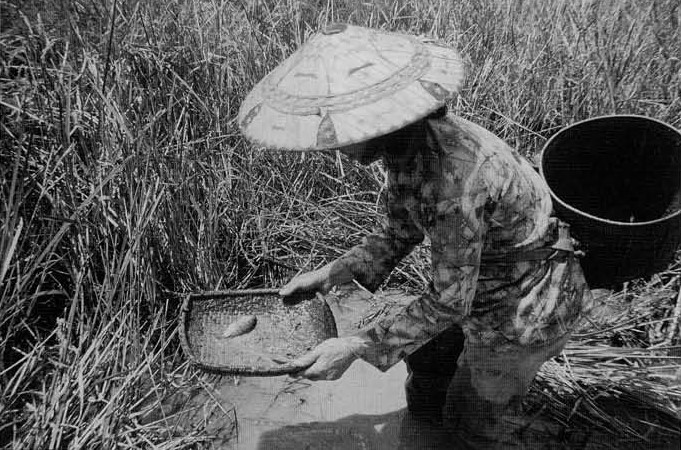
These few examples show that the long-standing equation of Borneo agriculture with shifting cultivation can still be found throughout the island, other agricultural types have been successfully used for a long time. Shifting cultivation will continue to be practiced in Borneo’s interior areas for many years to come; however, as fallow times shrink and yields diminish in many regions, other agricultural systems will need to be adopted. Some of the examples presented above may show the direction for the future development of agriculture in the forests of Borneo.
